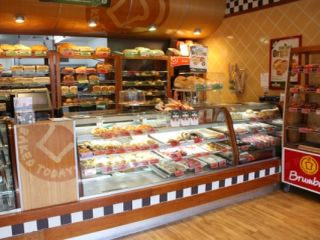
What is the biggest challenge now and how will that change?
Food retailing is a fast paced and highly competitive area which ultimately drives our biggest challenge and business opportunity. We dedicate a significant amount of our time and resources in identifying and keeping ahead of changing customer needs and competitors activity and in evolving our brand offer and business model to address these changes and promote franchisee profitability.
What drives consumer bread purchasing?
Customers continue to seek quality, natural or real products over the mass-produced products that are full of artificial preservatives. Value and health are key drivers for bread customers which we see reflected in the increased consumption of the artisan or specialty loaves and the multi and wholemeal grain loaves.
Brumby’s has tailored its product offering to meet these changes with the recent launch of the Get Active and Preservative Free Range and the extension of its artisan products in the bakeries.
How labour intensive is running a bakery?
Brumby’s bread is of course a handcrafted product made from scratch so labour is inevitably one of our key input costs. It is because of this that Brumby’s has invested heavily over the years in developing labour efficient operational practices, specialised equipment and training programs aimed at reducing our labour needs without compromising our reputation. These sorts of initiatives have been instrumental in broadening the appeal of owning a Brumby’s bakery to a greater audience as seen by the notable increase in men and women from a non-bakery background becoming a franchisee.
How does a bakery franchisee achieve a profit in their business?
Our bakery franchisees ultimately make their profit the same way every other small business owner does: keeping the customer and their needs always ‘front and centre’ of the business while maintaining a firm control of expenses.

